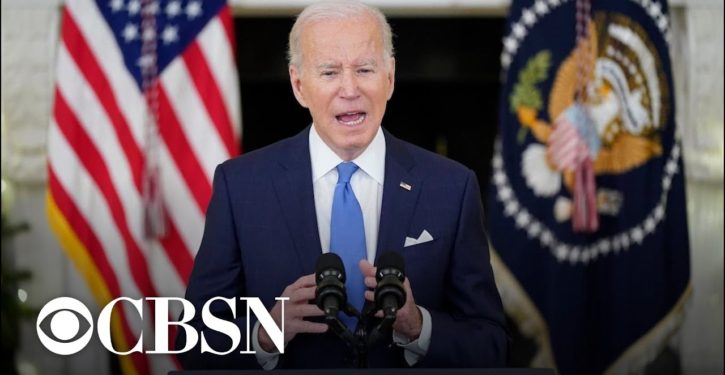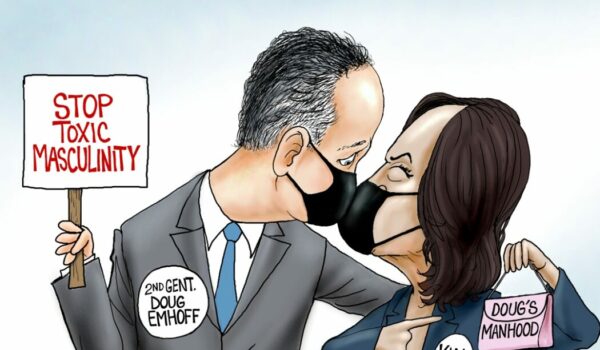
At Reason magazine, Peter Suderman points out a paradox: government subsidies aimed at helping the middle class have made the essentials of middle class life much less affordable, driving up the cost of housing, education, and healthcare. Yet Democrats are responding to these rising costs by advocating new subsidies and regulations that would increase costs further:
Yet what’s notable about all of these middle-class basics is that they have already been subject to decades of policy interventions, often though not always from Democrats. These elements of middle-class life have become unaffordable in tandem with, and in some cases because of, decades of policy interventions designed specifically to make them more accessible and more affordable to the middle class. And today’s elected Democrats seem intent on repeating the mistakes that brought America to this point.
Consider higher education, where the presence of decades of federally backed grants and loan programs has coincided with dramatic increases in the cost of college since the 1970s. From 1980 to 2016, higher education costs rose 238 percent, far faster than inflation. Student loan programs designed to make college more affordable have contributed to the escalating price of a degree, making it possible for universities to charge ever-higher tuition fees. A policy nominally geared toward affordability begat decades of unaffordability.
And rather than unwind it, many of today’s Democrats seem ready to double down: Hence, President Joe Biden’s move to cancel $400 billion in student loan debt and tweak payment rules in ways that will, if anything, further raise the cost of higher education while incentivizing degree choices with lower earning potential.
Similarly, following the passage of Medicare and Medicaid in the 1960s, national health care spending as a percentage of the economy rocketed upwards, rising from about 5 percent of gross domestic product (GDP) in the 1960s to more than 18 percent of GDP….much of the rise is attributable to the infusion of a vast system of federal funding that previously did not exist, and, as spending that doesn’t require specific congressional authorization in general pays for specific services rather than more general health outcomes, has been subject to few meaningful spending controls.
Even as Medicare and Medicaid plowed hundreds of billions of taxpayer dollars into the nation’s health care system, the cost of health care for middle-class working Americans grew increasingly difficult to afford: hence, the passage, in 2010, of the Affordable Care Act.
The Affordable Care Act added hundreds of billions more in federal spending, much of it targeted at subsidizing private health insurance; yet in the years after the law went into effect, families making just above the cutoff line for subsidies—about $100,000 a year for a family of four, depending on the year—struggled to afford health insurance. Notably, when former President Barack Obama commemorated the health law’s anniversary last year, he lamented that it still struggled to provide the affordability the law’s title had promised.
As with higher ed, Biden has tried to remedy the failures of Obamacare subsidies with even more subsidies: The American Rescue Plan, the $2 trillion stimulus plan passed by Biden and congressional Democrats in early 2021, funneled tens of billions into an expansion of the health law’s private insurance subsidies—an expansion that was initially scheduled to be temporary, but was extended through 2025 via the Inflation Reduction Act. At best, these subsidies have merely masked underlying premium increases; more likely, they have contributed to those cost increases in much the same way that higher ed subsidies have contributed to the price of college.
Each additional dollar in federal financial aid causes a tuition hike of about 65 cents, according to the Federal Reserve Bank of New York.
Biden’s proposed “Build Back Better” plan would lead to still more inflation, according to economists across the political spectrum. Former Congressional Budget Office Director Doug Elmendorf said it will “push up” inflation. The Committee for a Responsible Federal Budget’s Marc Goldwein said it would create “inflationary pressures.” Bank of America’s Ethan Harris said it will “create even more price pressure.”
The policies Biden has managed to implement caused inflation, according to economists like Bill Clinton’s Treasury Secretary, Larry Summers, and Obama advisor Steven Rattner. As Rattner noted in the New York Times in 2021, Biden spent “an unprecedented amount” of taxpayer money, which resulted in “too much money chasing too few goods.”
Federal meddling in local infrastructure projects radically increased the cost of highways since the early 1970s, notes legal scholar Walter Olson. Spending per mile on interstate highway construction more than tripled, after taking inflation into account. Federal laws passed in 1970, 1972, and 1973 made it easier for citizens and special-interest groups to “contest infrastructure projects, driving up their cost and delaying their implementation and completion.”
The federal government delays local infrastructure projects with all sorts of unnecessary rules that other countries reject as wasteful and expensive. Construction of public infrastructure is slow and costly in the United States compared with Europe. New York City subways are a famous example: The Second Avenue line now being partially constructed — a century after it was originally proposed — costs six times as much as a comparable subway line in Paris. Dutch road crews built an entire highway overpass over a single weekend. Such rapid construction seldom happens in the U.S.
As the infrastructure construction has slowed as a result, President Biden has proposed yet more federal meddling in intervention through his proposed $2 trillion infrastructure plan, which would make infrastructure more costly. Economist Chris Edwards says Biden’s plan will damage America’s infrastructure while shrinking our economy. He calls it “Biden’s anti-infrastructure plan“:
The infrastructure bill will be funded by tax hikes. Those hikes, combined with the labor and green regulations Biden wants to impose, will damage infrastructure, not help it.
The key to infrastructure policy is recognizing that the private sector owns most of it. In 2019, the nation had a massive $40 trillion in nondefense, nonresidential fixed assets, which is a broad measure of infrastructure. The private sector owns 65% of it, including power stations, freight railways, pipelines, factories, broadband networks, and much else. State and local governments own 30%, including highways, schools, and airports. The federal government owns just 5%….Private industry invests in infrastructure to earn profits, so when the government reduces profits with regulation and tax increases, businesses cut investment, and infrastructure suffers…..Because private infrastructure is so huge, seemingly modest changes in tax rates can have a large effect. The Tax Foundation estimated that Biden’s tax increases would reduce investment in fixed assets, including infrastructure, by more than $1 trillion.
Biden’s infrastructure plan would make things much worse, by imposing burdensome labor and energy regulations on infrastructure projects that drive up costs. Biden wants “union jobs” for highways, transit, energy, manufacturing, railroads, airports, broadband, and water systems. He wants to require all federally assisted projects to have “project labor agreements,” which require hiring workers through unions, paying union wages and benefits, and using union work rules. But only 13% of U.S. construction workers are currently unionized. As Chris Edwards notes, “Union‐backed Davis‐Bacon rules already raise wage costs on highway projects by about 20%, and PLAs will likely raise costs further. Thus, under Biden’s plan, taxpayers will get less bang for their buck in terms of new infrastructure facilities built with their money.”



